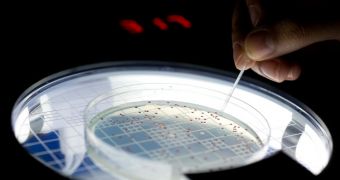Georgia institute of Technology (Georgia Tech) investigators say that they are currently conducted an interesting study, which involves placing a resurrected gene from a bacteria that lived more than 500 million years ago into a modern microorganism, and observing what happens.
This gives the research team the ability to observe evolution as it happens. The test organism selected for this investigation is Escherichia coli (E. coli), a species of bacteria that is heavily used by scientists for a wide variety of study types.
Performing this study would be impossible with a process called paleo-experimental evolution, which is what allowed the investigators to bring the ancient gene back to life. Using standard genetic manipulation techniques, the Georgia Tech team then inserted the gene into the genome of E. coli.
Thus far, the test colonies have multiplied for more than 1,000 generations, right under researchers' microscopes. This gave scientists the opportunity to investigate the intricacies of the evolutionary process in close detail, as it happened in front of their eyes.
“The ability to observe an ancient gene in a modern organism as it evolves within a modern cell allows us to see whether the evolutionary trajectory once taken will repeat itself or whether a life will adapt following a different path,” says expert Betül Kaçar.
“This is as close as we can get to rewinding and replaying the molecular tape of life,” adds the scientist, who is a NASA astrobiology postdoctoral fellow at the Georgia Tech NASA Center for Ribosomal Origins and Evolution.
One of the most interesting results of the study, the team says, is that some of the E. coli cultures adopted the new gene so well, they then adapted to their new environment with extreme efficiency. In fact, these organisms are now more fit than their modern-day counterparts.
“The altered organism wasn’t as healthy or fit as its modern-day version, at least initially, and this created a perfect scenario that would allow the altered organism to adapt and become more fit as it accumulated mutations with each passing day,” adds Eric Gaucher.
The expert, the postdoctoral advisor overseeing Kaçar’s work, says that the results were recently presented at the NASA International Astrobiology Science Conference.
“We think that this process will allow us to address several longstanding questions in evolutionary and molecular biology. Among them, we want to know if an organism’s history limits its future and if evolution always leads to a single, defined point or whether evolution has multiple solutions to a given problem,” Kaçar explains.

 14 DAY TRIAL //
14 DAY TRIAL //